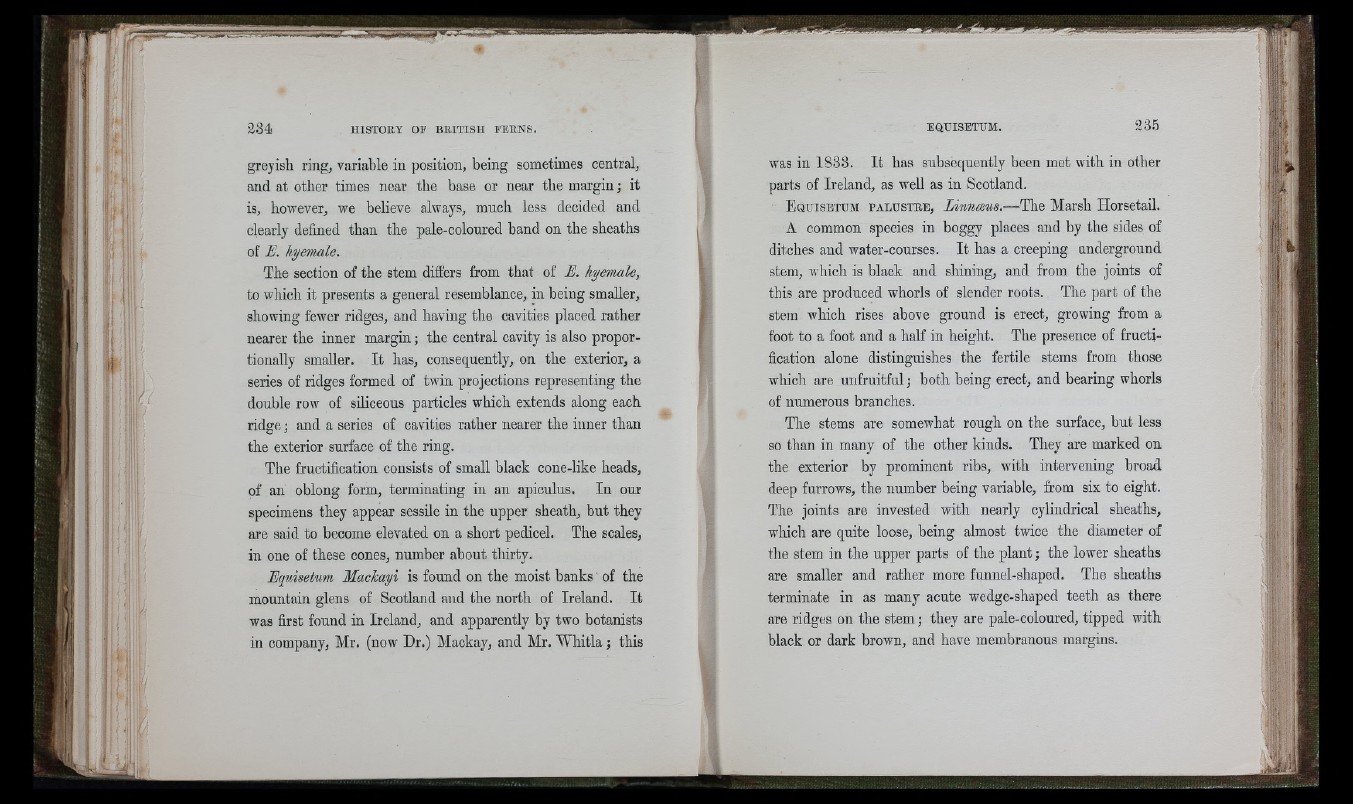
234 HISTORY OF BEITISH FERNS.
greyish ring, variable in position, being sometimes central,
and at other times near the base or near the margin; it
is, however, we believe always, much less decided and
clearly defined than the pale-colonred band on the sheaths
of B. hyemale.
The section of the stem dffiers from that of E. hyemale,
to which it presents a general resemblance, in being smaller,
showing fewer ridges, and having the cavities placed rather
nearer the inner margin; the central cavity is also proportionally
smaller. It has, consequently, on the exterior, a
series of ridges formed of twin projections representing the
double row of siliceous particles which extends along each
ridge; and a series of cavities rather nearer the inner than
the exterior surface of the ring.
The fructification consists of small black cone-like heads,
of an oblong form, terminating in an apiculus. In our
specimens they appear sessile in the upper sheath, but they
are said to become elevated on a short pedicel. The scales,
in one of these cones, number about thirty.
Equisetum Machayi is found on the moist banks' of the
mountain glens of Scotland and the north of Ireland. It
was first found in Ireland, and apparently by two botanists
in company, Mr. (now Dr.) Mackay, and Mr. W h itla ; this
was in 1833. It has subsequently been met with in other
parts of Ireland, as well as in Scotland,
E q u ise t um f a l u st e e , Linnoeus.— The Marsh Horsetail.
A common species in boggy places and by the sides of
ditches and water-courses. It has a creeping underground
stem, which is black and shining, and from the joints of
this are produced whorls of slender roots. The part of the
stern which rises above ground is erect, growing from a
foot to a foot and a half in height. The presence of fructification
alone distinguishes the fertile stems from those
which are unfruitful ; both being erect, and bearing whorls
of numerous branches.
The stems are somewhat rough on the surface, but less
so than in many of the other kinds. They are marked on
the exterior by prominent ribs, with intervening broad
deep furrows, the number being variable, from six to eight.
The joints are invested with nearly cylindrical sheaths,
which are quite loose, being almost twice the diameter of
the stem in the upper parts of the plant ; the lower sheaths
are smaller and rather more funnel-shaped. The sheaths
terminate in as many acute wedge-shaped teeth as there
are ridges on the stem ; they are pale-coloured, tipped with
black or dark brown, and have membranous margins.